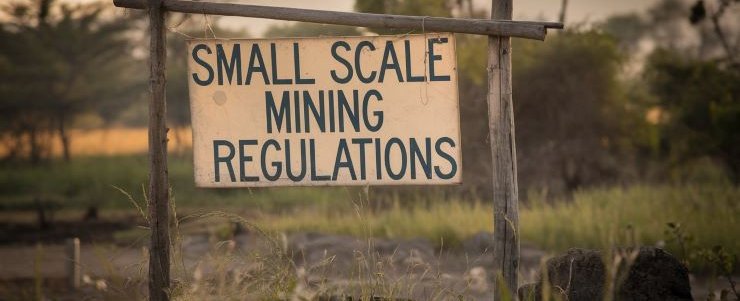Comprehensive Guide to Small-Scale Mining in Zimbabwe: 2024 Edition
Small-scale mining in Zimbabwe has become a crucial sector in mineral production, contributing significantly to the country’s economy. This comprehensive guide delves into the intricacies of small-scale mining operations, covering legal frameworks, operational best practices, and market insights. The information provided is tailored to both newcomers and established operators in the Zimbabwean mining sector.
Legal Framework and Regulations
The small-scale mining sector in Zimbabwe is governed by several key pieces of legislation that operators must be familiar with to ensure compliance and sustainable operations.
Mines and Minerals Act [Chapter 21:05]
This act forms the cornerstone of mining legislation in Zimbabwe. It outlines the procedures for acquiring mining rights, the obligations of miners, and the powers of mining commissioners. The act was amended in 2021 to include provisions that support the formalisation of artisanal and small-scale mining activities. Key sections relevant to small-scale miners include:
- Section 20: Outlines the process for pegging and registering a mining claim.
- Section 251: Details the rights of claim holders, including extraction and sale of minerals.
- Section 293: Specifies the annual fees payable for maintaining a mining claim.
Environmental Management Act [Chapter 20:27]
Environmental compliance is crucial for sustainable mining practices. This act mandates that all mining operations, regardless of scale, must:
- Conduct an Environmental Impact Assessment (EIA) before commencing operations.
- Implement an Environmental Management Plan (EMP) to mitigate negative impacts.
- Regularly report on environmental performance to the Environmental Management Agency (EMA).
The 2023 amendment to this act introduced stricter penalties for non-compliance, emphasising the need for small-scale miners to prioritise environmental stewardship.
Gold Trade Act [Chapter 21:03]
This act regulates the buying and selling of gold in Zimbabwe. Small-scale gold miners should be aware that:
- All gold produced must be sold to Fidelity Printers and Refiners (FPR) or licensed buyers.
- Possession of gold without proper documentation is illegal and carries severe penalties.
The recent 2022 amendment introduced incentives for increased gold deliveries to FPR, including improved pricing structures for small-scale producers.
Operational Best Practices
Successful small-scale mining operations in Zimbabwe require adherence to best practices in various aspects of the mining process.
Mining Methods Comparison
Different minerals require specific mining methods. The table below compares common methods used in small-scale mining in Zimbabwe:
| Method | Suitable Minerals | Advantages | Disadvantages | Avg. Cost (USD/ton) |
|---|---|---|---|---|
| Open-pit | Gold, Chrome | Low cost, High production | Environmental impact | 15-25 |
| Underground | Gold, Tantalite | Less surface disturbance | Higher risk, More skilled labor | 40-60 |
| Alluvial | Gold, Diamonds | Simple equipment, Low investment | Seasonal dependency | 10-20 |
| Heap Leaching | Gold | Low cost for low-grade ores | Chemical handling risks | 30-50 |
Safety and Health Considerations
The Mining (Management and Safety) Regulations of 2022 have introduced more stringent safety requirements for small-scale miners. Key provisions include:
- Mandatory safety training for all workers, with refresher courses every six months.
- Provision of Personal Protective Equipment (PPE) appropriate for the specific mining activity.
- Regular health check-ups for workers, with emphasis on respiratory and mercury exposure assessments.
Implementing these measures not only ensures compliance but also significantly reduces accident rates and improves overall productivity.
Environmental Management
Sustainable mining practices are crucial for long-term viability. Small-scale miners should focus on:
- Implementing progressive land rehabilitation techniques alongside mining activities.
- Adopting water recycling systems to minimise freshwater consumption and reduce contamination risks.
- Exploring mercury-free gold processing methods, in line with the Minamata Convention on Mercury, which Zimbabwe ratified in 2019.
Market Insights and Economic Impact
Understanding market dynamics is crucial for small-scale miners to maximize their economic potential.
Mineral Pricing and Market Trends
As of 2024, the following pricing trends are observed for key minerals in the small-scale mining sector:
- Gold: The government has introduced a new pricing model that offers up to 80% USD payment for deliveries, significantly boosting formal gold production from small-scale miners.
- Chrome: Export regulations have been relaxed, allowing small-scale miners to directly export, leading to improved price realizations.
- Semi-precious stones: The establishment of a gemstone auction centre in Mutare has provided a formal marketing channel, enhancing price discovery for small-scale producers.
Economic Contribution
The small-scale mining sector’s contribution to Zimbabwe’s economy has grown substantially:
- As of 2023, small-scale and artisanal miners contribute over 60% of the country’s gold output.
- The sector provides direct employment to over 500,000 people, with indirect benefits reaching an estimated 3 million Zimbabweans.
- Foreign currency generation from small-scale mining has become a significant contributor to the national fiscus, accounting for approximately 30% of mineral export earnings in 2023.
Conclusion
Small-scale mining in Zimbabwe presents significant opportunities, but success requires a thorough understanding of the legal landscape, adherence to best practices, and keen market awareness. By following the guidelines outlined in this comprehensive guide, operators can navigate the complexities of the sector, ensuring sustainable and profitable mining ventures.
For further information and support, miners are encouraged to engage with:
- The Zimbabwe Miners Federation (ZMF) for advocacy and networking.
- Ministry of Mines and Mining Development for regulatory guidance.
- Environmental Management Agency (EMA) for environmental compliance support.
Remember, responsible mining practices not only ensure regulatory compliance but also contribute to the long-term sustainability of Zimbabwe’s mineral resources and economic growth.
References:
Environmental Management Act as Amended 25 March 2006
Tags
Share
0 Comments
Quick Links


